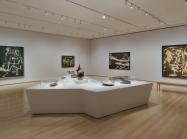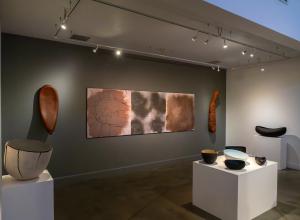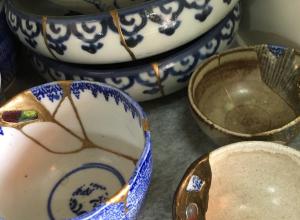The exhibition evokes midcentury Gotham itself. Visitors are greeted at the entrance by a photomural of a liquor store on the Bowery. Just beyond that, an arrangement of images by masters of street photography such as Diane Arbus, Roy Decarava, and Garry Winogrand, provide glimpses of the Mad Men era metropolis, while nearby, shelves display contemporaneous art periodicals, and published writings by leading authors such as Amiri Baraka and Frank O’Hara.
At this point, those who knew New York before it became a playground for the one percent may experience pangs of heartache. Though the Big Apple was far from perfect back then, it hadn’t yet slipped to its hollowed-out, 1970s nadir, and it still possessed a humming manufacturing base, a bustling commercial waterfront, and a significant middle class that included a large constituency of museumgoers. These conditions shaped the “new art” as Solomon called it.
According to Solomon, what made it new was the “relish” with which artists tackled “the visual environment and…aesthetic experience for 99 percent of Americans.” In other words, the postwar culture of mass consumption conditioned by Hollywood and Madison Avenue, a trend that marked a decisive break with Abstract Expressionism’s psychosexual dramatics.
Just as the Abstract Expressionists looked inward for their work, the artists encouraged by Solomon (and coevals such as gallerist Sidney Janis and curator Lawrence Alloway) gazed outward to a city where materials could be harvested from the sidewalks, and inspiration could come from the ceaseless stimulation of billboards, newsstand magazines, theater marquees, TVs playing from appliance shops, and department store windows.
Although we’d call this aesthetic Pop Art today, the label hadn’t quite stuck yet, and Solomon’s definition of “new” extended to assemblage as well as to image appropriation. Both are evident in the cracked-glass panel attached to James Rosenquist’s Sightseeing (1962), and in the paint-spattered trio of the eponymous bottles in Robert Rauschenberg’s Coca-Cola Plan (1958).



























